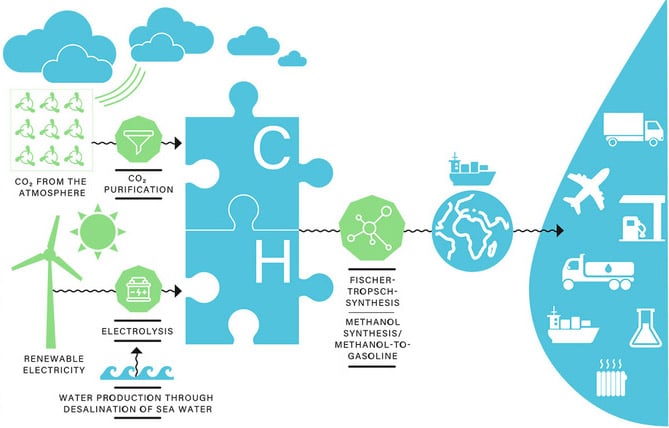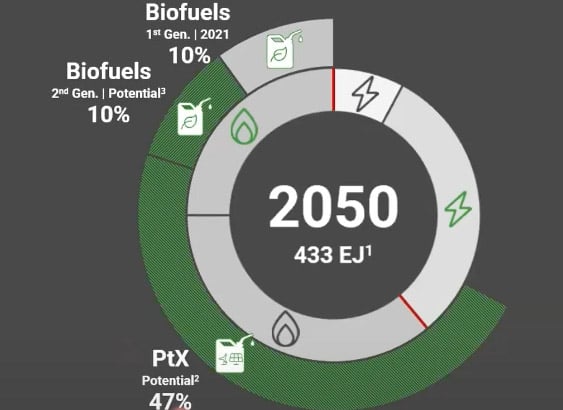eFuels Alliance is a Germany-based organization committed to the worldwide promotion and expansion of e-fuel production capabilities and their widespread application. The goal of the company is advancing and intensifying the production of synthetic carbon-neutral fuels. Last week, the results of a recent study published by Liebherr and Frontier Economics have been discussed during an online event, with a particular focus on the use of eFuels in the off-road sector.
The share of electric vehicles in the market for passenger cars and vans is increasing. However, electrification in aviation, heavy duty as well as in the maritime and off-road sectors is difficult or impossible to realize. Especially in the off-road sector, where vehicles are much larger and manufactured for extreme conditions, as well as in other applications ranging from chainsaws, mobile cranes, and excavators to snow ploughs, electrification is not always a viable option. An online event with eFuel producers Infinium and Nordic Electrofuels, as well as companies like DEUTZ, STIHL, Liebherr and Frontier Economics, provided detailed insights.

eFuels are climate-neutral synthetic fuels produced from renewable energy sources. For that only electricity generated from solar or wind, water, and carbon dioxide are required. The basis for the production of eFuels is the so-called power-to-liquid pathways, which are used to produce electricity-based liquid fuels using renewable electrical energy. First, hydrogen is produced from desalinated seawater by electrolysis using renewable electricity. The hydrogen is then synthesized with carbon dioxide using the Fischer-Tropsch process, developed back in 1925 in Germany, to produce a liquid climate-neutral fuel. This fuel can be used as an admixture in petrol, diesel or heating oil or as a pure climate-neutral fuel.
The urgent need to reduce fossil fuels
 Today’s world energy consumption is highly depended on fossil molecules. If one divides the energy consumption in two variable one can see molecules on the one hand and electrons on the other hand. Electrons in today’s energy economy only contributes 20% and the dominant amount provided by fossil molecules, the 80%. While the ODA scenario introduced in 2021 announced ambitions and targets to reach 20% to 40% electron use of the entire energy consumption in 2050, the use of molecules will still be high at 60%, particularly fossil molecules will still be dominant.
Today’s world energy consumption is highly depended on fossil molecules. If one divides the energy consumption in two variable one can see molecules on the one hand and electrons on the other hand. Electrons in today’s energy economy only contributes 20% and the dominant amount provided by fossil molecules, the 80%. While the ODA scenario introduced in 2021 announced ambitions and targets to reach 20% to 40% electron use of the entire energy consumption in 2050, the use of molecules will still be high at 60%, particularly fossil molecules will still be dominant.

One answer to this problem could be a renewable fuels potential, as represented in the image, with 10% of first-generation biofuels and 10% of second generation biofuels of the world’s energy consumption. But due to limited feedstocks, these capacities are limited and that is why eFuels or PTX products have to play a decisive role corresponding to 47% of final energy consumption.
 Copyright 2020 All rights reserved.
Copyright 2020 All rights reserved.